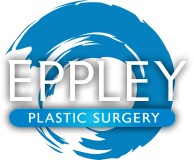Your Questions
Your Questions
Q: Dr. Eppley, I am 49 years old and am interested in the LeFort 1 procedure. Please see attached photos and give me your advise, I had brace work done twenty years ago because my top teeth were behind my lower front teeth. I think a LeFort 1 procedure would have been more appropriate. Can it be done now? Please advise me as to what surgery would give me a more attractive face.
A: Thank you for sending your photos. What they demonstrate is that you have a midfacial hypoplasia and you are correct in that a LeFort I advancement done years ago would have been better for facial balance and midfacial fullness. But doing it now is not possible because it will change the way your teeth meet. This is why LeFort surgery and orthognathic surgery in general is done in conjunction with orthodontics. I have done them in patients your age and older but only if they were edentulous and wore dentures as new dentures are relatively easy to make.
What you can do now is camouflage your midfacial hypoplasia with paranasal/premaxillary facial implants to bring the base of the nose and the central maxilla more forward. This can be demonstrated with computer imaging.
Dr. Barry Eppley
Indianapolis, Indiana
Q: I had Medpor implants placed in the paranasal area several years ago in 2007. It appears that I will be undergoing a LeFort I osteotomy in future. I was wondering whether these implants need to be removed for this procedure and how difficult is it to do so?
A: Paranasal implants are placed around the curve of the pyriform aperture to add fullness under the nostril base of the nose. They help push out the base of the nostrils and are most commonly used to augment a midface deficiency. They are made out of different materials of which Medpor is one of them. This porous material does allow for tissue ingrowth which makes it more difficult to remove than that of silicone, for example. But they can still be removed without a lot of tissue destruction to do so.
A LeFort I osteotomy makes a bone cut directly across the pyriform aperture area. Advancing the upper jaw at this level creates midface fullness, particularly in the paranasal and anterior nasal spine area. (base of the nose) It would be absolutely necessary to remove paranasal implants when performing this procedure. The fullness created by moving the upper jaw at this level makes the need for paranasal implants after bone repositioning as irrelevant.
Dr. Barry Eppley
Indianapolis Indiana

